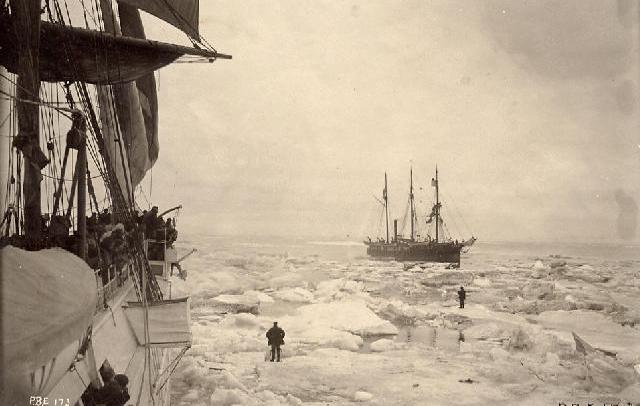Today marks the official launch of Old Weather: Whaling, a citizen science research initiative that will help scientists analyze historical data from whaling logbooks, in an effort to improve our understanding of long-term climate variability and weather patterns from the 19th century through today.
A new and growing consortium of libraries and museums in New England have now joined the team of NOAA and University of Washington- led climate researchers, archivists, and citizen-scientists of Old Weather (www.oldweather.org).
Using a newly designed web portal, citizen scientists will begin transcribing and analyzing sea ice and weather data from the logbooks of Arctic whalers and other ships dating from the 1840s. Contributing institutions where these historic logbooks are held include the New Bedford Whaling Museum, Providence Public Library, the Nantucket Historical Association, Martha’s Vineyard Museum, Mystic Seaport and the New Bedford Free Public Library. These institutions hold the majority of all Arctic whaling logbooks still in existence, and with the contribution of federal logbooks (U.S. Navy, Coast Guard, and Coast Survey) from the U.S. National Archives, nearly every surviving logbook can be put to new use for science.
Volunteer citizen-scientists who join Old Weather make real contributions to understanding one of the most important scientific questions of our time. The data volunteers extract from logbooks will be used to drive climate and sea ice models that will help in the prediction of future climate. Not only this, they work with—and experience again—the first-hand accounts of the whalers as they pursued their quarry into perilous Arctic seas. Their unique descriptions of the Arctic found in the logbooks are often wrapped in an exciting tale, told in few words. These stories will provide the best historical documentation of the Arctic marine environment over the past two centuries.
Almost all of the ships that have sailed the world oceans since the mid-nineteenth century were also wandering weather stations. Most were equipped with barometers, thermometers and other instruments of meteorology. The crews onboard these ships recorded weather information and made notes about the sea and sky. This was done not only to assist navigation, but also to provide data to Navy oceanographers who were mapping the winds and ocean currents of the world. Now with a pressing need to understand how climate is changing in the Arctic and elsewhere, there is new purpose for these data collected so long ago.
For more information on how to become involved as a citizen scientist with the Old Weather: Whaling project, visit: www.oldweather.org.
The Old Weather team is made up of climate scientists, archivists and special collections experts, web and database design specialists at Zooniverse, and the indispensable citizen-scientists and volunteer moderators who make the project work. Scientific leadership is provided by Dr. Kevin Wood, of NOAA and the University of Washington Cooperative Institute for Climate, Ocean and Ecosystem Studies; Dr. Philip Brohan, UK Met Office Hadley Centre; and Dr. Gilbert Compo of the University of Colorado and NOAA’s Earth System Research Laboratory.



